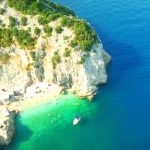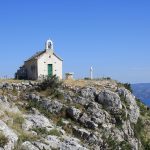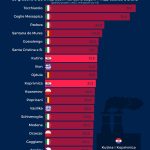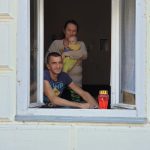As Glas Istre/Luka Jelavic writes on the 16th of January, 2020, most of the work involved in transforming areas of Groznjan into tourist attractions is related to the restoration of the bell tower itself and the repair of the roof of the parish church in Groznjan, the restoration of the church in Kostanjica, the restoration work involved with the churches in Kuberton and Vrnjak, the restoration works in the church of St. Ivan and the decoration of the Olive Oil Museum in Zavrsje, as well as the decoration of the promenade in Groznjan, as part of the cultural and historical centre.
Since its inception, the Municipality of Groznjan has earmarked a considerable amount for the culture and protection of cultural and religious monuments, consisting of around twenty percent of the annual budget. This will be the case again this year, and around 2.2 million kuna is earmarked for these purposes and cultural events of interest to the municipality and its citizens. Part of the funds for this have been provided directly from the budget, while part, especially for larger investments, will be raised from various funds or donations from state institutions and the like.
Of this amount, almost one million kuna will be invested in cultural and religious heritage buildings in Groznjan.
In the parish church in Groznjan, the stairs to the bell tower were restored earlier, the entrance to the bell itself was expanded, and a new front door to the bell tower will be erected. Otherwise, the bell tower and statics need to be strengthened and accessibility improved so that in the near future the 36-metre-high bell tower, built next to the church between 1603 and 1682, can also be used as a lookout for tourists.
The church in Sterna, built in 1746 with the bell tower erected in 1791, will continue to function as it always has done. The entire roof is being restored, followed by the painting and decorating of the interior, which was illuminated last year.
The restoration of the southern and northern chapels in the interior of the parish church, which was built in 1500 and completed in 1769, has already been completed in Kostanjica. Documentation was also prepared for the renovation of the ceiling and roof of that particular church. The north chapel’s restoration was followed by additional works on the roof to preserve the interior before further reconstruction. In front of the church lies a gorgeous Venetian bell tower, made of sandstone, on whose arch the year of construction was written – 1766. The cemetery will also be worked on in Kostanjica.
”There are many smaller and larger sacral objects in our area that are part of the cultural and sacred heritage that should be preserved from decay. It’s the most difficult where there are very few or no residents, such as in Vrnjak, a long-abandoned village or in Kuberton where a house is restored and some people come back. This year, we’ll be working to save the churches in these two places. In addition to the roof, wooden joinery needs to be repaired. The municipality invests in such facilities every year as much as it can, there’s a lot of work to be done, especially on roofs that are damaged and on the ceilings and interiors which are damaged, which is a huge amount of damage because the churches are mostly painted,” says Claudio Stocovaz of Groznjan, adding that the fresco on the the ceiling of St. Florian’s Church near Martincic was recently restored.
Other activities in the field of culture and cultural heritage include a massive 112,000 kuna cash injection for ”regular” activities (cultural programs, the municipality award for the Ex tempore painting event, the creation and publication of the Grožnjan monograph and various cultural events), while the budget for local festivals and cultural events that nurture folk traditions and customs, is estimated at around 230,000 kuna.
For the Jazz is Back! cultural event, the municipality will allocate 322,000 kuna, which is part of the total cost of the international festival, and 300,000 kuna is planned for the continuation of the preservation and renovation of the inter-storey structures of the castle in Zavrsje, a historic building built back in the eleventh century as the palace of the noble Contarini family, which ruled the area for three centuries.
Part of the funds from the budget is also earmarked for the regular activities of the Fonticus City Gallery and for various other activities which preserve culture and the arts as a whole.
Make sure to follow our dedicated travel page for more on Groznjan and Istria.








